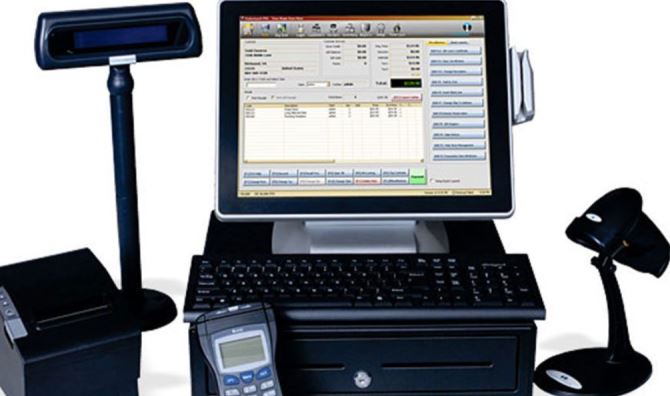In the ever-evolving landscape of retail, omnichannel strategies have emerged as a game-changer, providing seamless and integrated shopping experiences. At the heart of this transformation lies the Point of Sale (POS) system, acting as a linchpin in connecting the dots across various channels. Let’s delve into the indispensable role that POS systems play in the realm of omnichannel retailing.

1. The Foundation of Omnichannel Integration: POS as the Nexus
In omnichannel retailing, the POS system serves as the central nervous system, connecting online and offline channels into a cohesive unit. It becomes the hub where transactions, inventory, and customer data converge.
2. Unified Inventory Management: Breaking Silos
Real-Time Inventory Visibility
POS systems enable retailers to have a unified view of inventory across all channels.
Preventing Stockouts
Seamless tracking ensures that customers can find what they want, whether online or in-store.
3. Seamless Customer Experience: Beyond Channel Barriers
Single Customer View
POS systems consolidate customer data, offering a holistic view of their interactions across channels.
Personalized Engagement
Armed with comprehensive customer insights, retailers can personalize the shopping journey, increasing customer satisfaction.
4. Integrated Sales Channels: Bridging the Gap
Online to Offline (O2O) Transactions
POS systems enable customers to buy online and pick up or return items in-store.
Cross-Channel Promotions
Implementing promotions seamlessly, fostering a consistent brand experience.
5. Flexibility in Fulfillment: Meeting Customer Expectations
Ship-from-Store Capability
POS systems empower retailers to fulfil online orders directly from the nearest physical store.
6. Multi-Channel Payment Processing
Unified Payment Solutions
POS systems integrate various payment methods, providing a seamless experience across channels.
Mobile Payment Integration
Embracing mobile wallets and contactless payments, catering to evolving customer preferences.
7. Customer Engagement and Loyalty: Beyond Transactions
Purchase History Access
Associates can access a customer’s purchase history from any channel, offering personalized recommendations.
8. Analytics for Informed Decision-Making
Cross-Channel Analytics
POS systems consolidate data from various channels, offering valuable insights into customer behaviour.
Inventory and Sales Forecasting
Predictive analytics help in optimizing inventory levels and planning for future demands.
9. Enhanced Operational Efficiency: Streamlining Processes
Centralized Management
POS systems simplify operations by providing a centralized platform for managing products, prices, and promotions.
Reduced Manual Errors
Automation in inventory updates and order processing minimizes manual errors, enhancing overall efficiency.
10. Adapting to Changing Consumer Behaviors: Future-Proofing Retail
Supporting Emerging Channels
As retail trends evolve, POS systems can easily adapt to support new sales channels, ensuring future relevance.
Technological Integration
Integrating emerging technologies like augmented reality or virtual reality seamlessly into the shopping experience.
11. Challenges and Solutions: Navigating the Omnichannel Landscape
Data Security Concerns
POS systems must prioritize robust security measures to protect sensitive customer data.
Integration Complexities
Retailers need to choose POS systems that offer easy integration with existing infrastructure to avoid disruptions.
12. Case Studies
Amazon Go
The cashier-less model integrates POS technology seamlessly, redefining the in-store experience.
Nike
Leveraging POS for order management and inventory visibility, Nike creates a unified customer experience across online and offline channels.
Future Trends
Voice Commerce Integration
POS systems may evolve to incorporate voice-activated commands, enhancing convenience.
Augmented Reality Experiences
Augmented Reality transcends traditional shopping experiences, turning physical stores into interactive spaces where the boundaries between the digital and real-world blur. Customers can virtually try on clothing, accessories, or even makeup products using AR applications, enhancing the pre-purchase decision-making process.
AR facilitates interactive product information overlays. Shoppers can access detailed specifications, reviews, and multimedia content by simply pointing their devices at a product. AR-powered navigation guides customers through the store efficiently. Finding products, departments, or promotional sections becomes a seamless and enjoyable experience.
Conclusion
The POS system stands as the linchpin in the successful execution of omnichannel retailing, transforming the shopping landscape into a seamless, interconnected experience.
